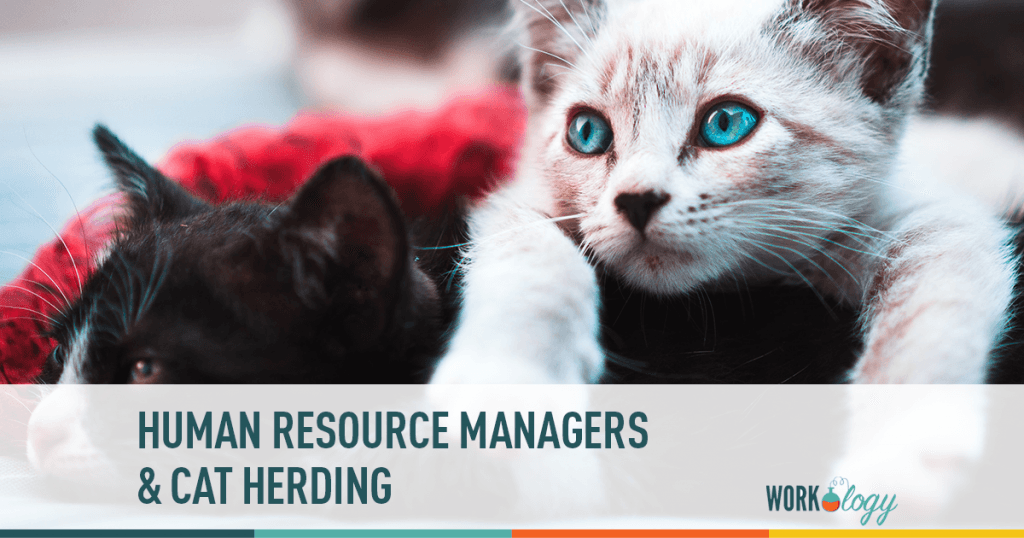Herding is a fine art. Sheep dogs do it. Cowboys too. Security at concerts and high profile events use herding as a part of creating order in confusing, stressful, and complicated situations.
Human resource managers? Nope, I’m not buying it.
Those were the exact words out of my mouth when I picked up this pin at a vendor booth at the Oklahoma Human Resource Conference. Bacon pins I understand, but cat herding, no.
And then I had a thought . . .
Human Resource Managers: Cat Herders & Cowboys
As human resource managers, our job is not unlike the cowboy driving cattle in one direction or another, but instead of cattle, we’re herding people. As a “mother” to multiple cats, I can attest that cat herding is in fact an extremely fine art. And the methodology behind the process is something that can provide insight, learning and humor into Human Resources strategy and human resource management.
What Cat Herding and Human Recourses Have in Common:
- Scatter: Groups – be they feline or human – have a tendency to scatter when times get tough or a challenging opportunity presents itself. But almost any type of corporate or human resource management process involves running, ducking, juking, and redirecting.
- Change: George, my cat who is 13 years young detests change. Move his water bowl and there’s meowing, moaning and groaning. Oh, and did I forget to mention belly-aching for days? Sound like anyone you know in your office or organization?
- Incentives: Finding the fabric that motivates your workforce or employee base is often found through intuition. And in that way cats and employees are no different. A good incentive can motivate and transform a culture or program, sometimes on nothing more than a shoestring budget. For my cats, tuna treats are my incentive of choice (but only the crunchy variety will do).
- Love Them: Honest engagement fosters loyalty, communication, and conversation. Love your cats, employees and candidates, and they will love you back. In that way people and cats are alike.. Nicey, who is 4 years old (pictured above) sat underneath our bassinet for several weeks before my daughter Ryleigh was born. Even after we brought her home from the hospital Nicey served as a “watch cat,” alerting me to any restlessness by Ryleigh. Of course, the human relationship is the ultimate challenge in terms of human resource strategy. But open communication and genuine care go along way toward fostering good and clear relations
- Boundaries: When herding cats, it helps to have boundaries and a direct plan for success. Anticipate obstacles, plans for exit, and potential pitfalls. A good cat herder prepares for the scatter. A good HR manager teaches and trains their team and extended workforce to do the same. And sometimes we call for backup.So what kind of cat herder are you?
Be sure to check out the Cat Herding video below for a more detailed look into the world of Cat Herding and the similarities to human recourse management.
(Thanks, Patrick Allmond for sharing the cat herding video!)
Shout out to The Presimmon Group for the inspirational button.










4 Comments
Jessica,
Love the post on cat herders. Regardless of our position, I think we can all identify with that term.
Herding cats, cattle, and people all require great skill. You’ve summed it up nicely.
PS. My cat, Pickles, agrees with this too! 🙂
Kirk
@Kirk,
Thanks. Of course Pickles does. You need to post a pic. . .
Jessica
@blogging4jobs
Love the post!! An outstanding, humorous allegory on a very challenging and demanding profession!
Thanks Nancy, it really makes sense in my mind and as a cat and pet lover I enjoy that too.
JMM
Comments are closed.